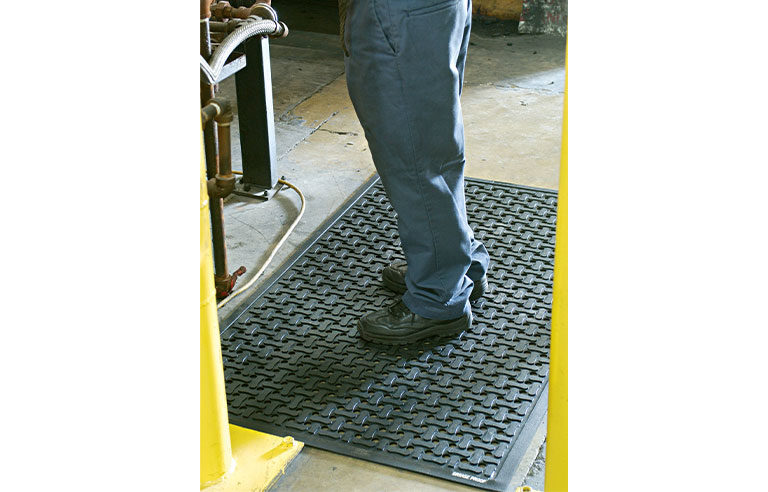How are industrial mats designed to reduce fatigue and provide ergonomic support for employees who stand for extended periods?

Responding is Andrew Buchheit, president, M+A Matting, LaGrange, GA.
Slips, trips and falls are among the most common workplace incidents, costing commercial and industrial organizations billions of dollars annually in medical expenses and lost productivity. National Safety Council research shows that these incidents are the second leading cause of workplace injuries, with associated costs reaching around $70 billion annually. Further, musculoskeletal injuries caused by standing on hard floors can lead to significant health care costs, reduced productivity, higher insurance premiums and increased absenteeism. Recent innovations in commercial matting have addressed these challenges head-on, offering enhanced performance, versatility and value.
A paradigm shift in matting technology
One of the most significant advancements in matting materials is the introduction of nitrile rubber. Although nitrile rubber was developed in the 1930s, its application in high-performance, multipurpose commercial and industrial matting has gained prominence more recently. This recent adoption is because its superior properties – including exceptional durability, chemical resistance and the ability to maintain performance under extreme temperatures – have made it an attractive material for these specific uses. Nitrile rubber mats can withstand oils, greases and various chemicals, making them ideal for environments where these substances are present. The ability to maintain their properties under extreme temperatures ensures long-term performance and minimizes the need for frequent replacements.
Building on the advantages of nitrile rubber, modular and linkable floor tiles represent another leap forward. Modular nitrile rubber tiles can incorporate anti-fatigue capabilities while maintaining a level work surface without any transition in floor height, ensuring a safe and ergonomic workspace.
Ergonomic design and anti-fatigue benefits
Anti-fatigue mats using nitrile rubber are designed to reduce physical stress and provide ergonomic support for employees who stand for extended periods in any type of environment. Anti-fatigue mats promote subtle movements in the leg and calf muscles, which increases blood flow and oxygen levels, reducing soreness and fatigue. Nitrile rubber coupled with nitrile cushioning improves compression deflection (relative to other materials such as polyvinyl chloride and PVC foam). The nitrile cushion quickly regains its original shape and cushioning after being subjected to heavy loads or traffic. This ensures nitrile rubber mats provide the right balance of softness and support, preventing cumulative standing trauma.
Choosing the right matting solution
Prioritizing matting made with nitrile rubber surface and multipurpose matting products can simplify maintenance, reduce the need to purchase a variety of matting products and help manage costs. Nitrile rubber mats offer superior durability, chemical resistance and slip resistance compared with traditional PVC surface mats. Additionally, modular nitrile rubber mats provide a versatile and ergonomic solution that can adapt to various industrial environments, ensuring both safety and comfort for employees. By investing in high-quality nitrile rubber mats, employers can improve employee well-being, reduce incidents and manage costs more effectively.
McCraren Compliance offers many opportunities in safety training to help circumvent accidents. Please take a moment to visit our calendar of classes to see what we can do to help your safety measures from training to consulting.
Original article published by Safety+Health an NSC publication


